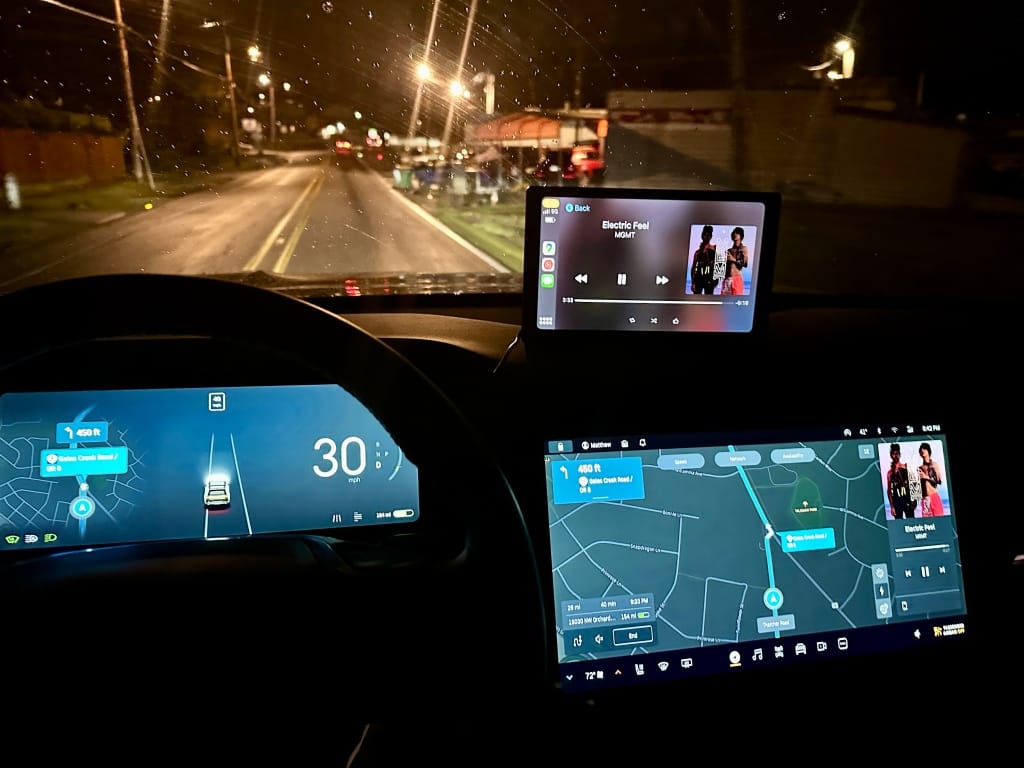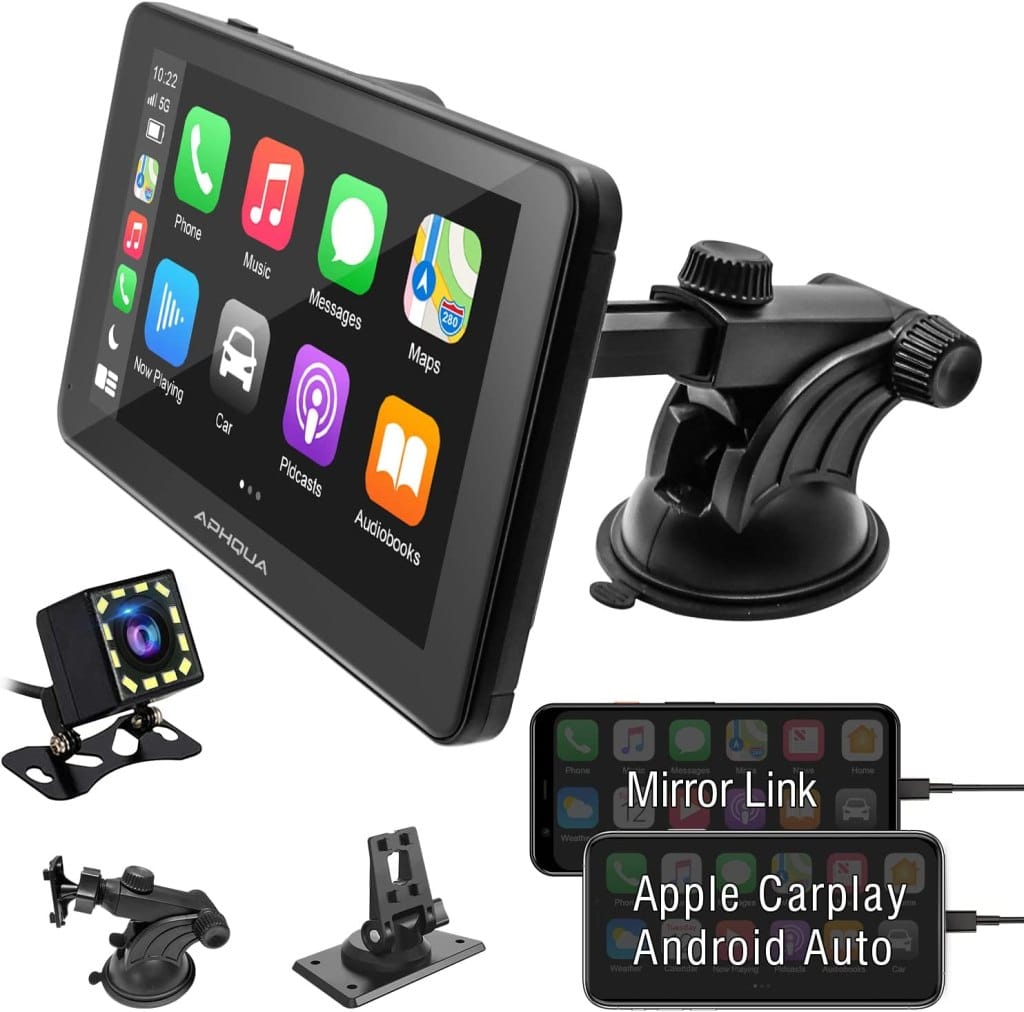A new "3rd way" for CarPlay

I am a fan of Apple's CarPlay. I think it can make driving safer while keeping you informed of new calls and texts, and entertained with podcasts and music, all without having to take your eyes off the road or ever feel the need to pick up your phone while driving. It's pretty good software, not quite great and I have a lot of problems with it (that will wait for a future blog post).
Since I'm the guy who loves CarPlay and I've been a car stereo nerd since the 1980s, all my friends tend to ask me how to get CarPlay into their vehicles, especially after they rent a car somewhere and get to experience it for the first time.
The existing two ways

Usually, I tell people there are two options. The first is buying a new or used car, and making sure to find a model that supports CarPlay natively, which is around the 2018 model year for most cars. CarPlay first hit cars around 2016 but wasn't supported in many popular models and brands until 2020 so you kind of have to google anything in that range to see what is supported. I understand, it's kind of a bold option if all you want is a better stereo experience in a car, but it is a solution if your car is currently on its last legs.

The second option is that I tell people to load up Crutchfield's What Fits In My Car page and put in all the relevant details to see if they even offer you CarPlay head units that can replace your existing car stereo. Usually, cars from 2010 and before can easily handle an aftermarket stereo that will run about $300-500 to get a full CarPlay experience and it will definitely make your old car feel new again. I've added CarPlay to four different early 2000s used cars and loved driving them afterwards. They really do feel like new vehicles.
The bummer situation is for anyone that owns a car built from about 2010 to about 2017, which was a weird time for many car companies as they started pushing more features into their stock stereo systems—things like controlling the heat and A/C, adjusting settings on your car's lights or door locks, and other car-specific preferences. You can't simply drop out the stock stereo and replace with an aftermarket one, because you'll lose those controls over your heat and A/C, and other settings.
To date, I've told those friends they were kinda screwed. Some small companies have created black box ways to sideload CarPlay into them, but usually they're hacky and you have to do some secret button/taps to even get them to work each time you start your car. It's not ideal.
A new third option

I was annoyed when the Rivian I ordered three years ago that recently arrived at my doorstep didn't include CarPlay from the factory. I know Jeff Bezos was a big investor in Rivian on behalf of Amazon, so the new car only supports Alexa inside, not Siri or Google, which is a shame (it sucks to get caught in the crossfire of a billionaire pissing match).
I went looking absolutely everywhere for options and eventually I found a new product I'd never heard of, and I bought one, and use it, and while it has flaws, for anyone stuck in a system that can't be changed, it's actually a good solution.
If you have a car that supports bluetooth audio as an input, but doesn't have CarPlay and can't be easily changed out to a new head unit, THIS IS FOR YOU.

The image above is the Aphqua 7" portable CarPlay device, and it's about $159 on Amazon right now. The one in the photo at the top of this section is my slightly larger 9" screen model I bought for about $259.
What is it exactly?
These devices work in any vehicle that supports bluetooth audio from your phone. What happens through your phone is delivered to your car stereo exactly as it has before. What is new and clever is that you have a new screen attached to your dash or windshield that connects to your phone over a local WiFi connection, and basically acts as a controller for CarPlay (and Android Auto) while still maintaining your bluetooth connection to your car for audio streaming.
This means the moment I added the box to my Rivian, my phone connected to it via bluetooth (at first) then WiFi (full-time) and gave me a big new CarPlay screen I can interact with using voice or by tapping the touchscreen, but the Rivian still only talks to my phone over bluetooth, and continues to do that.
Basically, these new boxes are Wireless CarPlay devices that control your phone, while your phone continues to interact with your car over bluetooth.
For anyone with one of those weird 2010-2017ish era of cars, this means you can finally get CarPlay into your car for under $200. They come with suction cups to attach to your windshield or dash, and only require a 12v plug into your dash. Everything else they do is wireless, but if your car pre-dates bluetooth support, they throw an aux-in cable in the box that can deliver audio to your car if you only have an aux-in port.
This also works in fancy new EVs like the Rivians and Teslas out there that refuse to support CarPlay natively. If you've always wanted CarPlay in your Tesla, buy one of these and plop it onto your dash and you can start enjoying CarPlay in your electric car.
What don't these devices do well?
I've only tested my wireless CarPlay box on my Rivian, but the first time you start the car, and you select a music track or podcast on the new screen, it usually plays back through the device's own tiny speaker (that also sounds very tinny). I believe this is a bug either with Rivian or the box's makers. I need to do more testing on other cars to see how they react to it.
To remedy this, I hit pause on the CarPlay screen, then switch to my car's native system showing the bluetooth connection to my phone, where I hit the play button, then my music/shows continue playback on the car's stereo system. Problem fixed.
Siri interactions happen through the box's tiny speaker and microphone, so you have to keep the volume on the box high (if you mute it, you will never hear Siri), but otherwise everything plays through my car's stereo after the initial pause/unpause dance when you first start the car. Music usually unpauses after Siri reads a text message, back on my car's stereo speakers too.
Overall, these devices fill a niche for a very reasonable price, don't require complex installations, and give you CarPlay that mostly works in cars never designed to support them. I really like them as a new third option and will recommend it to everyone I know with a car too old to come with CarPlay, but not so old you can replace the stereo with an aftermarket unit.
